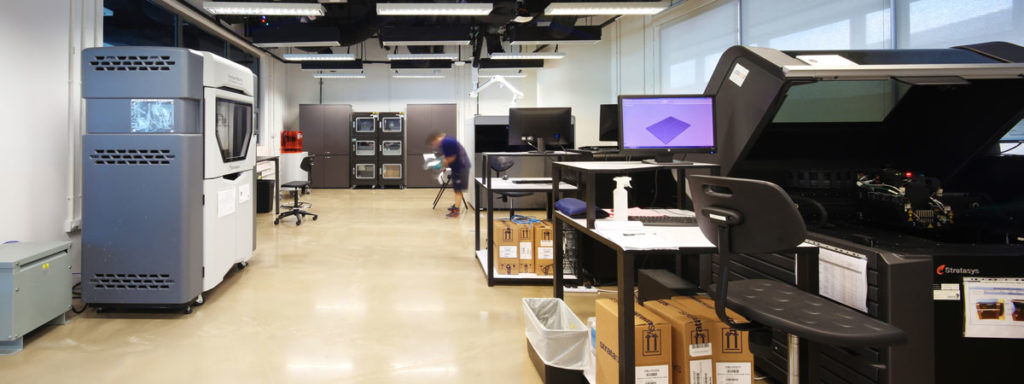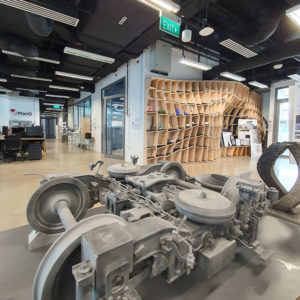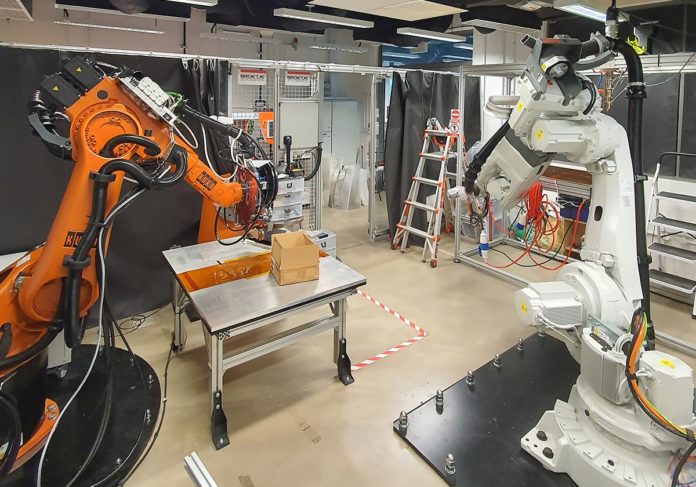Given the immense potential of additive manufacturing (AM), SUTD researchers are integrating the technology into a workflow, which industries can seamlessly adopt to manufacture various kinds of products.
From some of the most sophisticated machines found in spacecraft that travel to other planets, to robots that can perform precise movements such as assisting with medical surgeries, are made of custom-built parts. But often the economics of manufacturing dictates that many copies of the same product be made at the same time to bring down the cost of making individual parts. As a result, most consumer products are mass produced while custom-built products are very expensive.
Enter additive manufacturing (AM), which allows designers to inexpensively fabricate tools for specific use in industries ranging from aerospace to consumer products like shoes. Despite this potential, additive manufacturing is still far from being widely adopted by industries because it is to integrate the technology into their existing manufacturing processes.
Seeing these barriers to widespread adoption, researchers from the Singapore University of Technology and Design (SUTD) created a workflow that seamlessly integrates additive manufacturing into existing manufacturing processes. As we live through the Fourth Industrial Revolution, with its focus on highly customised design and technology, let us look into the groundbreaking work SUTD researchers are doing to make industries more efficient, and products more individualised.
Precise Designs
In conventional manufacturing, a whole set of tools and machines are involved in making just one part of a product. For example, just the rod that connects the piston of a car to the crankshaft is made using a set of machines dedicated for that purpose. Hence, in order to recoup the high manufacturing cost of those rods, the automotive industry will have to make thousands of the exact same product part.
“Compared to conventional processes intended for mass production, AM is capable of fabricating unique, customer-specific products,” explained David Rosen, former Professor at SUTD’s Engineering Product Development pillar.
Similar to 3D printing, additive manufacturing creates products by adding materials on top of another. For example, Professor Rosen’s current research focuses on a particular AM process called Powder Bed Fusion (PBF). In this process, a specialised machine manufactures products by sequentially adding layers of metal powder and then fusing the powder using a beam of energy.
As with other AM processes, the machine used in PBF can be employed to create a variety of products with vastly different shapes, instead of having a set of machines that make just one product. As a result, additive manufacturing makes it economical to manufacture few copies of a product without worrying about the economies of scale. Additionally, AM allows for making products with complex geometries, which is a challenge with conventional manufacturing.

 Despite these advantages there are still barriers to AM’s widespread adoption by industries. One of these barriers is its integration into the existing industrial processes.
Despite these advantages there are still barriers to AM’s widespread adoption by industries. One of these barriers is its integration into the existing industrial processes.
“AM is a relatively new process, and most of the design tools available were created with other methods in mind,” explained Associate Professor Arlindo Silva, a material science researcher at SUTD. For instance, currently used computer-aided design (CAD) tools are not connected to the AM machines. As a result, the designs created using existing CAD tools have to be translated to formats that AM machines can understand. This requirement prolongs the process of trial and error to make sure the product created using AM has the shape and properties the designer had in mind.
“Our workflow puts all the steps involved in additive manufacturing into the same computer environment,” Associate Professor Silva said. “This eliminates the need to translate designs across different systems.”
Thinking Ahead
The research led by Professor Rosen and Associate Professor Silva will also help engineers control the physical properties of finished products from the design stage, instead of relying on trial and error to get the properties right.
“In designing products made through a sequence of processes, engineers need to consider how each process modifies the properties to ensure that the finished product satisfies all requirements,” Professor Rosen said. “Our digital design-manufacturing workflows include all processes in the manufacturing chain so that the designer understands the process chain, its effects on the part, whether all requirements can be met, and total fabrication times and costs.”
For instance, Professor Rosen’s team is using additive manufacturing to create structural parts, such as top tubes of a bicycle or connecting rods of a car, where strength and weight are key requirements. The team’s workflow allows engineers to design parts and be assured that the whole process will result in a finished product that is as light as possible while remaining stiff enough for the application.
“Our workflow will allow designers to define, from the get-go, the final product’s shape and material properties in specific regions, a feat not achievable with current technologies,” said Associate Professor Silva. “This is made possible by physics-based simulations tied to the specific AM technology we are using.”
Building trust for AM
Given the tremendous potential of AM, from manufacturing automotive parts to creating materials for marine and offshore applications, the researchers hope that their integrated workflow will build industry trust on the processes.
“AM has to be seamlessly integrated, reliable, and replicable for potential adopters to feel comfortable in translating some of their manufacturing to this new technology,” Associate Professor Silva said. “The work we are doing positively contributes to these issues.”
Although the researchers are currently focused on Powder Bed Fusion method, their aim is to expand use of their workflow for other AM processes.
“Our methods are easily transferrable to other metal AM processes and materials,” Professor Rosen said. “With a bit of work, we could apply our technologies to polymer, composite, and ceramic materials and a wide variety of manufacturing processes.”
One promising application of their work outside of Power Bed Fusion is in the field of automated fiber placement (AFP) used to make composite materials. These are materials that are lightweight but have similar if not superior qualities to conventional metals. They also have applications ranging from aircraft and spacecraft structures and wings to frames of household appliances.
“Much like AM, AFP is a computer-driven process that requires an integrated workflow to be adopted by industry,” said Associate Professor Silva. “The lessons we are learning with this current project will be important for the application of the same principles to AFP.”































